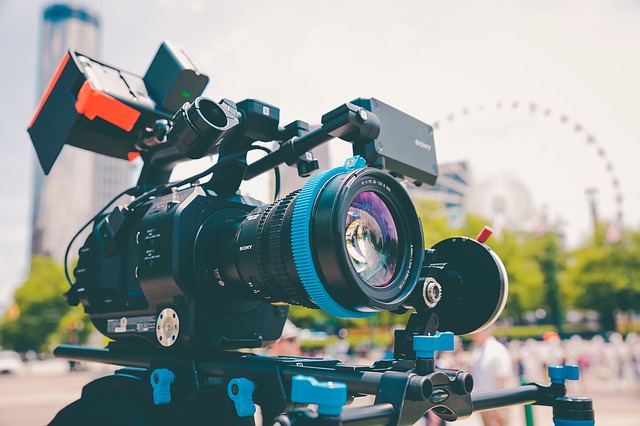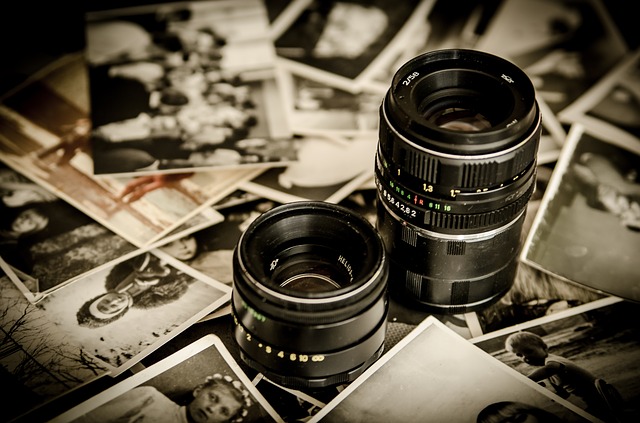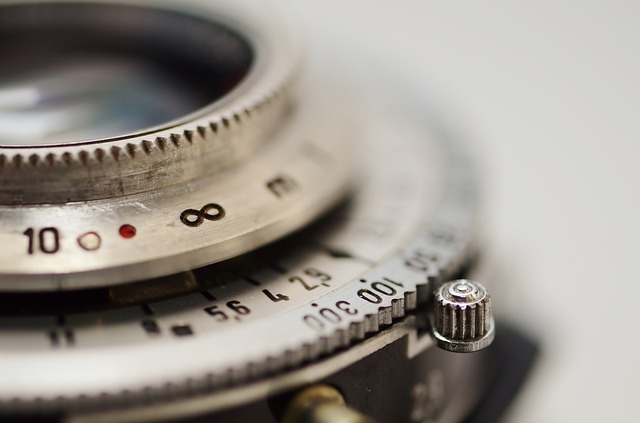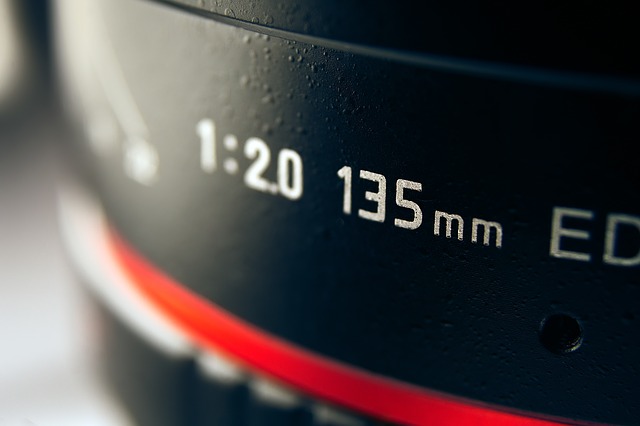
Camera Systems: How Lenses Work


Understanding Camera Lenses
For photographers, videographers and filmmakers, understanding how lenses work will offer you more control when exploring your craft. When choosing the right lens, it is important to remember what you may lose or gain with lens speed, weight, size, focal length, cost and image quality. It's the intention of this guide to help you better understand how camera lenses work in all of its aspects.
Image Quality & Lens Elements
Most cameras contain lenses that are made up of lens elements that have specific jobs of guiding the path of light rays to replicate an image as precisely as possible on the digital sensor. Ultimately, the goal is to lessen aberrations while using the most cost-effective elements.
Optical aberrations happen when specific points in the captured image don’t translate back into single points after passing through the lens. This can cause a few problems like image blurring and chromatic aberration, which is the reduced contrast or misalignment of colors. Lenses may also fall victim to similar issues such as distortion or vignetting, which is a reduction of an image’s brightness or saturation at the periphery compared to the image center.
Influence of Lens Focal Length
 The focal length plays a major role in the functionality of lenses. The focal length of a lens regulates its angle of view, which determines how much the subject will be magnified during a photographic session. Telephoto lenses have long corresponding focal lengths while wide angle lenses have shorter focal lengths.
The focal length plays a major role in the functionality of lenses. The focal length of a lens regulates its angle of view, which determines how much the subject will be magnified during a photographic session. Telephoto lenses have long corresponding focal lengths while wide angle lenses have shorter focal lengths.
Many believe that focal length can influence the perspective of an image. This isn’t necessarily true because perspective is entirely contingent on an individual's location relative to the subject. Now, what would happen if a person attempted to fill a frame with the same target subject using both a telephoto and wide angle lens? In this instance, the perspective will change because the individual will be forced to either move closer to the subject or further away. Only in this scenario does the wide angle lens distort the perspective by either stretching or exaggerating the picture whereas the utilization of the telephoto lens flattens or compresses perspective.
Keep in mind that lens focal lengths are designated for 35 mm equivalent cameras. If you have something different, such as a digital or compact SLR camera, then it’s very likely that you have a different type of sensor size. If you’re interested in changing the size of the sensor, you may be able to find the answer in the manual provided with your camera.
We can’t overlook the other possible factors that may be influenced by lens focal length. For example, telephoto lenses tend to be more vulnerable to camera shake because small hand movements have become magnified. Just think of the shakiness that most people experience when they’re peering through binoculars. Wide angle lenses were designed to resist flare. While designing wide angle lenses, the creators made the assumption that the sun would make its way into the shot. Without this resistance to flares, the shot would be distorted. Finally, you should be aware that medium and telephoto lenses typically yield better optical quality for about the same price range.
Focal Length & Handheld Photos
 The focal length of a lens also plays a substantial role in achieving high-quality handheld photographs. To minimize blurring that takes place due to shaky hands, use longer focal lengths which require shorter exposure times. Take, for example, an individual holding a laser pointer as steady as they can. When you’re shining the pointer at something far away, it frequently jumps around much more than if you were to shine it at something that was nearby.
The focal length of a lens also plays a substantial role in achieving high-quality handheld photographs. To minimize blurring that takes place due to shaky hands, use longer focal lengths which require shorter exposure times. Take, for example, an individual holding a laser pointer as steady as they can. When you’re shining the pointer at something far away, it frequently jumps around much more than if you were to shine it at something that was nearby.
There’s actually an explanation for this. Slight rotational vibrations are enlarged significantly the further away they are. On the other hand, if side to side or up and down vibrations were present, the laser point wouldn’t change, no matter the distance.
When estimating the speed at which the exposure needs to be for a given focal length, you should consider the “one over focal length rule”. This rule dictates that when a 35 mm camera is being used, the exposure time needs to be at least as quick as one over the focal length in seconds. To simplify this rule with an example, if you were to use a 200 mm focal length on a 35 mm camera, the exposure time would have to be at a minimum of 1/200 seconds. If these conditions aren’t met, blurring may occur.
This rule isn’t completely set in stone, meaning you should use it as a rough guideline at best. There are some who may be capable of maintaining a handheld shot for shorter or longer periods of time. Individuals who prefer digital cameras with cropped sensors need to convert to a 35 mm equivalent focal length.
Zoom Lenses vs. Prime Lenses
 Zoom lenses allow photographers to vary the focal length within a range that has been pre-defined. This cannot be done with a “prime” or fixed focal length lens. There are many advantages associated with zoom lenses. Chief amongst them is that a zoom lens allows the user to achieve a range of perspectives or compositions (especially because changes in the lenses are not necessary). You can consider this to be an advantage, especially when engaging in a more dynamic environment, such as children’s photography or photojournalism.
Zoom lenses allow photographers to vary the focal length within a range that has been pre-defined. This cannot be done with a “prime” or fixed focal length lens. There are many advantages associated with zoom lenses. Chief amongst them is that a zoom lens allows the user to achieve a range of perspectives or compositions (especially because changes in the lenses are not necessary). You can consider this to be an advantage, especially when engaging in a more dynamic environment, such as children’s photography or photojournalism.
Don’t let the utilization of a zoom lens fool you into thinking that you’ve eliminated the need to move around to obtain the best shot. You’ve simply gained a bit more flexibility when shooting. Don’t become complacent and think that a zoom lens is more than what it actually is. For example, if a prime lens were used to take a picture, changing the composition would have been impossible without cropping the image first. However, with a zoom lens an individual would have to modify the perspective by zooming out and physically approaching the subject. On the other hand, to achieve the opposite effect concerning perspective, an individual would have to zoom in and move farther away from the subject.
 So, here’s the question: If zoom lenses are so versatile, why would anyone intentionally restrict their options by using a prime lens? You can think of zoom lenses as the “new kids on the block”. Prime lenses were in existence well before zoom lenses ever hit the market and still offer a medley of advantages over their newer more modern counterpart. For example, when zoom lenses first made their appearance for consumer purchase, it was soon discovered that an individual had to be willing to sacrifice quite a bit of optical quality. In defense of the zoom lens, the more modern and recent versions typically produce images that are the same quality as prime lenses.
So, here’s the question: If zoom lenses are so versatile, why would anyone intentionally restrict their options by using a prime lens? You can think of zoom lenses as the “new kids on the block”. Prime lenses were in existence well before zoom lenses ever hit the market and still offer a medley of advantages over their newer more modern counterpart. For example, when zoom lenses first made their appearance for consumer purchase, it was soon discovered that an individual had to be willing to sacrifice quite a bit of optical quality. In defense of the zoom lens, the more modern and recent versions typically produce images that are the same quality as prime lenses.
In terms of flexibility and versatility, the zoom lens has the prime lens beat. However, the prime lens gains its true strength from its speed, cost, and weight. In fact, a relatively cheap prime lens can typically produce as good or even better quality images than high-end zoom lenses. Furthermore, if only a small fraction of the focal length range is necessary for a zoom lens, then it stands to reason that a prime lens with a comparable focal length would be both lightweight and smaller in regards to mass. Also, the highest-quality prime lenses are well known for their ability to gather the best light for a photo when compared to the fastest zoom lenses. This is especially crucial for certain situations that call for low light such as certain types of sport and theater photography. This is also necessary when a shallow depth of field is required.
When working with compact digital cameras, keep an eye out for certain zoom designations such as “3X”, “4X”, etc. These designations make reference to the ratio between the longest and shortest focal lengths. With that being said, it should be understood that a larger zoom designation doesn’t always mean that the image can be enlarged or magnified any more than it already is (the zoom may actually just have a wider angle of view when zoomed in all the way). It’s also important to make the distinction that digital zoom and optical aren’t the same thing. Digital zoom only enlarges an image through interpolation.
Influence of Lens Aperture or F-Number
 The aperture range of a lens refers to the amount that a lens can close down or open up to let in more or less light. When listed, apertures are seen as f-numbers; a quantitative description of relative light-gathering areas. As a side note, an aperture opening, called an iris, is rarely a perfect circle. This is due to the presence of 5 to 8 blade-like lens diaphragms.
The aperture range of a lens refers to the amount that a lens can close down or open up to let in more or less light. When listed, apertures are seen as f-numbers; a quantitative description of relative light-gathering areas. As a side note, an aperture opening, called an iris, is rarely a perfect circle. This is due to the presence of 5 to 8 blade-like lens diaphragms.
Note that larger aperture openings are assigned lower f-numbers. This can be confusing and it’s common that these two terms are often used interchangeably. Furthermore, lenses that have larger apertures are also described as being “faster”. This is because when one examines the given ISO speed, the shutter speed can be made to operate in quicker intervals for the same exposure. Also, smaller apertures mean that objects can be in focus over a much broader distance. This concept is also known as depth of field.
Maximum & Minimum Aperture
When shopping for a lens, the specifications on the box typically list the maximum, and at times the minimum, available aperture. If you’re in search of something that will give you greater artistic range and expression, lenses with a larger range of aperture settings may be the right choice for you in regards to depth of field and exposure options. When examining specifications the most important bit of information you should be looking for is the maximum aperture specification. This information should be listed on the box along with focal length(s).
An excellent application of large maximum apertures would be portrait and indoor sports/theater photography, to achieve a faster shutter speed or a more narrow depth of field. The utilization of a narrow depth of field in a portrait is ideal for isolating the subject from their background. Lenses with a larger aperture on digital SLR cameras provide a much brighter viewfinder image; ideal for photography at night or in low-light environments. These can also provide quicker and more precise auto-focusing in low light. Focusing your lens manually is also easier since the picture in the viewfinder has a narrow depth of field.
 As we’ve covered, maximum apertures for lenses are where you want to pay the most attention. Minimum apertures are simply not as important. In most cases, minimum apertures are seldom used due to photo blurring from lens diffraction. Another strike against minimum apertures is that they require extraordinarily long exposure times. Only during instances where depth of field is desired in the most extreme sense, is a smaller minimum aperture lens recommended. After all, in such a situation the lens would allow for a wider depth of field.
As we’ve covered, maximum apertures for lenses are where you want to pay the most attention. Minimum apertures are simply not as important. In most cases, minimum apertures are seldom used due to photo blurring from lens diffraction. Another strike against minimum apertures is that they require extraordinarily long exposure times. Only during instances where depth of field is desired in the most extreme sense, is a smaller minimum aperture lens recommended. After all, in such a situation the lens would allow for a wider depth of field.
There are a few lenses out there for digital SLR and compact digital cameras that list an entire range of maximum aperture, which is contingent on how far an individual has zoomed in or out. These specific aperture ranges only refer to the range of maximum aperture, and not the full spectrum. The major benefit of utilizing a zoom lens with a constant maximum aperture is that there is more predictability in the exposure settings no matter the focal length.
Finally, a few more considerations you should keep in mind are weight, cost, and size. Lenses that sport larger maximum apertures are generally larger, heavier, and as a result more expensive. You have to take the application of the lens into account when you’re searching for the proper equipment. If you’re shooting wildlife, for example, size and weight will play a crucial role in what type of lens you will purchase. Will you be shooting a film in a wooded area? Snapping the highlights at a football game? Know what you intend on using your lens for and no matter what you do - whether it's shooting a movie or simply snapping pictures - you'll be able to grab the right lens for the job.
